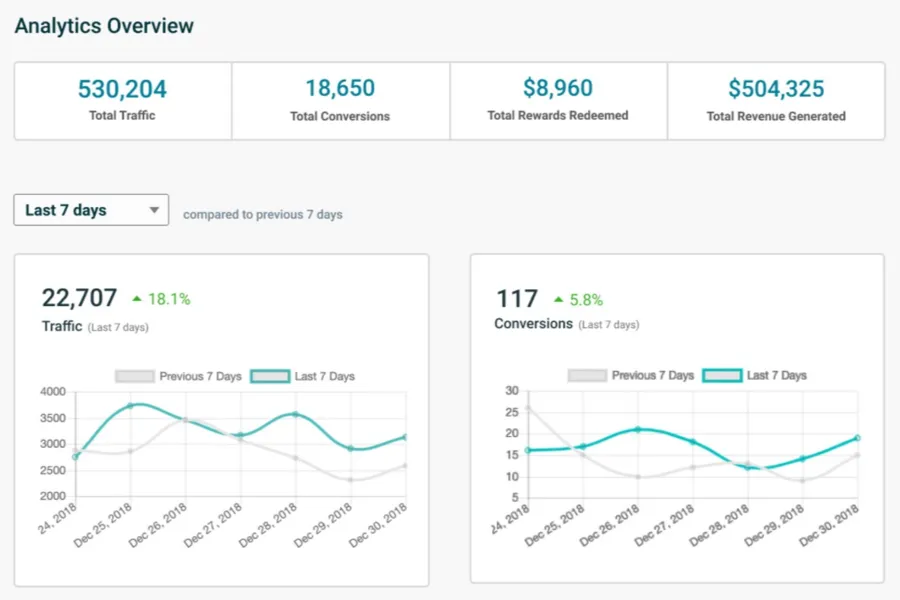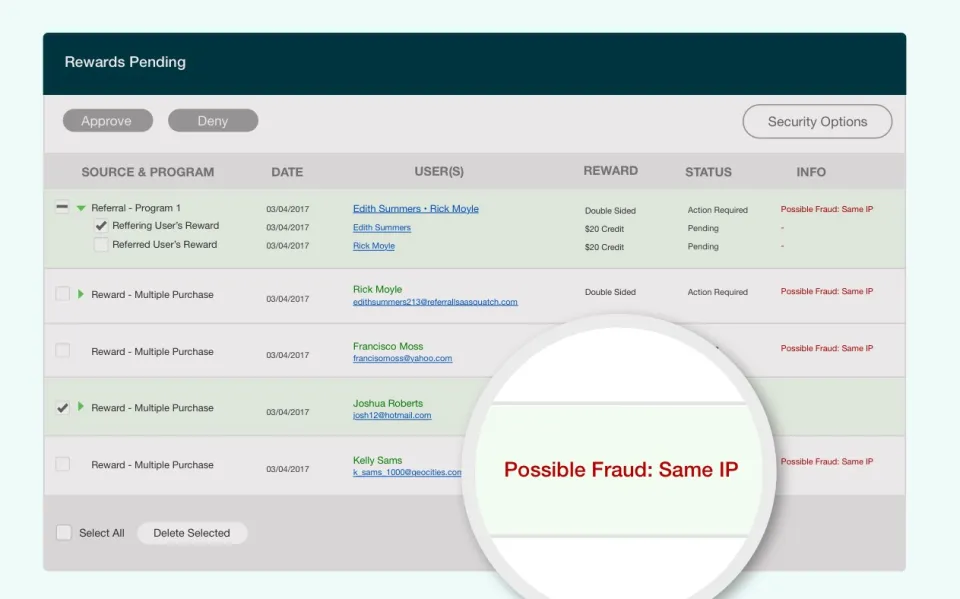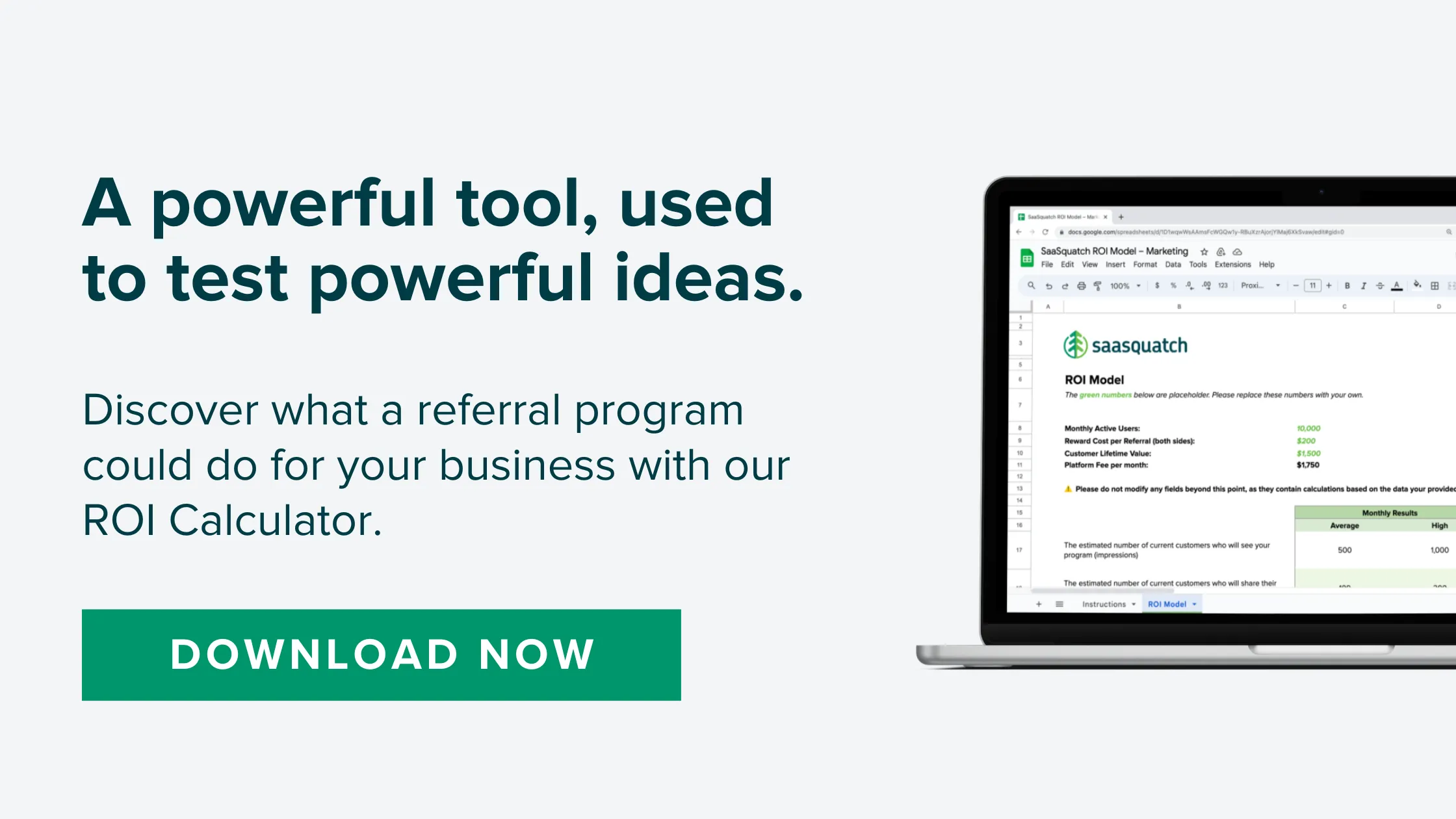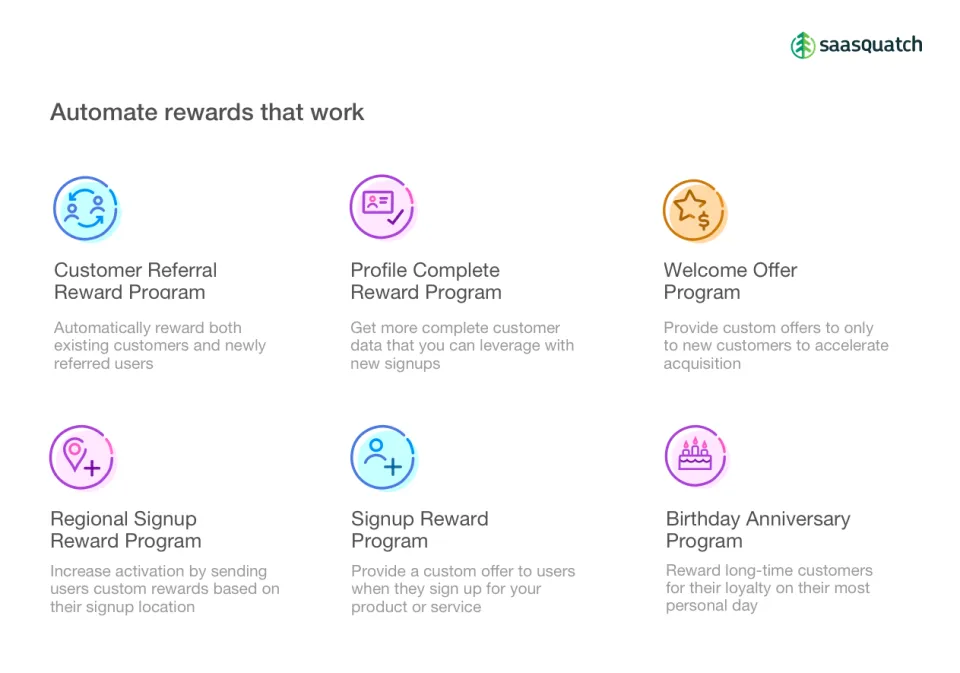5 Questions to Ask Before Launching a Referral Program
Many of us have been there - you finish launching a project only to realize you missed a few steps and exclaim “Why didn’t I think of that earlier!?” Or worse, you missed a critical step and the project fails.
This time, we’re here to help.
Deciding to launch a referral program is an exciting step for your business. For cloud-storage app Dropbox, it helped them grow 3900% in 15 months. For e-commerce website Zappos, it became their “number-one growth driver”.
We can’t wait to see what it will do for you!
To set you up for success, we’ve compiled the top 5 questions to ask about your business before launching a referral program.
Drawing upon our years of experience working with tech startups to Fortune 100 companies, we know what works and what doesn’t when it comes to building a world-class referral program.
#1 - What are my goals and how will I track them?
Before launching a referral program, it’s critical to establish what a “successful” referral program looks like for your company, and how you’ll know if you’re achieving it.
Step 1: Establish your goals
Do you want to attract customers from a segment of your target market? Do you want to boost customer loyalty, increase sales or lifetime value?
Decide your top reason(s) for implementing a referral program so you can always be making the necessary adjustments to get there.
Step 2: Establish your baseline
Without prior data, you’ll have no reference point to gauge how well your program is performing in regards to your goals. The best measure of success is against your own baseline to show if you're moving in the right direction, and at what speed.
Before launching, we recommend recording these metrics, plus any related to your specific goals:
- Customer acquisition cost (how much do you currently spend to acquire one customer?)
- Traffic conversion rate (how many website visitors are converting into paying customers?)
- Customer lifetime value (how much does the average customer spend with your brand?)
- Churn rate (how long does the average customer remain a customer?)
- Referral rate (how many customers are you acquiring through informal referrals/word-of-mouth?)
Step 3: Know how to track progress
Equally as important as establishing your goals is knowing how to track them.
Referred customers are known to have a higher lifetime value and spend more money, but the precise impact is different for every company. Using your baseline metrics as a reference, tracking your progress gives you a clear picture as to whether the money you’re spending on software, rewards, etc is being used effectively.
Access to reliable program metrics lets you:
- Analyze how your current program rules and rewards are supporting progress towards your goals,
- Make informed decisions to accelerate progress, and
- Communicate the value of your program to relevant stakeholders like investors or upper management.

Image: SaaSquatch
#2 - What is my budget?
While referral programs are known to drive exceptional results, there are costs involved in setting up a sustainable program. The three basic expense categories are:
- Software: Whether you build a platform in-house or leverage a third-party tool, how much will it cost you to build and/or maintain your program?
- Rewards: What will you offer as a reward for referring and/or referred users? Does this require an upfront investment or is it something you can offer internally?
- Human resources: Who will spend time managing the program’s success once it’s up and running? How much of their time will be dedicated to program management and support?
When carefully planned and executed, a referral strategy will deliver a positive return on any investments you need to make.
To help, we created a guide for calculating your return on investment based on your projected expenses in each of these categories. Download it for free by clicking below:
In particular, too many companies misjudge (or completely fail to calculate) the cost of the rewards they plan on offering, resulting in cancellation of programs (ie. Tesla), upset customers, or both. If you skip this step, your program will likely go one of two ways:
- You acquire many new customers by offering expensive, highly-desirable rewards, but can’t recover these costs because customers churn before you can recover the acquisition/reward cost.
- You fail to acquire any new customers because you’re offering cheap, low-value rewards (because either you have a low budget or you are just being stingy).
If you’re stuck on what to offer as a reward, start with Part 1 in our series all about choosing the best rewards.
#3 - What is the right software for me?
If you’re leveraging third-party referral software to automate your programs, two of the most important features to look for are in its security and flexibility.
Security
Even if you don’t want to admit it, referral fraud exists. If you don’t protect your business, you risk revenue ending up in the hands of scammers rather than your own bank account.
Tactics like account cycling (users registering multiple accounts to reap rewards) and self-referrals (existing users generating fake referrals to earn prizes) can severely undermine the success of your program if not monitored and managed appropriately.
Basic fraud prevention features include the ability to block users, blacklist IP addresses, and identify suspicious email domains. Learn more about preventative measures here.
Give yourself peace of mind by making security a top priority when evaluating software vendors.

Flexibility
Customers are expecting more and more personalization, and a successful program must deliver referral incentives and triggers unique to your user base.
Whether you want to incentivize referrals with company swag, a gift card, store credit, or other reward, the right software lets you adapt to your customers' evolving preferences.
Flexibility also means not limiting your growth strategy to just referrals. A referral program may be your top priority right now, but what if you want to start engaging customers in new ways next year?
An all-in-one rewards platform provides you with opportunities to create VIP programs, partner programs, birthday rewards, sign-up bonuses, and more.
The best referral software is one that can engage customers at every stage of the life cycle. Investing in a new piece of marketing automation software means ensuring that it can support your long term goals, and that you won’t need to deal with the pain of switching providers just because you have a new goal.
Looking for more guidance? We made a list of 8 things that every referral or loyalty program needs to be successful - look for each of these when choosing a referral software provider.
#4 - Who will be responsible for managing the program?
With the right software, there are many processes that can be automated to simplify program management like account creation, customer segmentation, reward fulfillment and reward tracking.
However, seasonal factors, consumer preferences and market trends are always shifting, which means your referral program must be an evolving part of your marketing mix. To stay relevant, a dedicated person or team should be responsible for monitoring the program’s progress towards the predetermined goals.
Once your program is launched, continuous management by a person or team involves the following:
- Providing support to program members
- Reviewing analytics against benchmarks to ensure progress towards goals
- Making iterations to deliver the highest ROI (ideally in real-time without needing to consult a developer)
- Surveying and understanding customer needs and wants
If you launch a referral program but don’t establish a way to continuously monitor its success, you won’t be able to keep up with new trends and market shifts.
We created a simple guide for how to tell if your program is working, with the four most important metrics to track and how to calculate them. Check it out here.
#5 - How will I continuously promote my program?
Although perhaps a bit ironic, a referral program won’t promote itself. A promotion strategy is critical for the success of every program - if customers don’t know it exists, how are they going to use it?
Promotion starts on the inside and moves outward.
Step 1: Educate internal team members about the program
As the first step in referral program promotion, internal employees must be made aware of its basic structure and goals.
When awareness of your initiatives spans multiple departments, you open more channels to reach customers. For example, a success team member can encourage customers to participate after a positive interaction, and an account manager can remind clients during each check-in.
You can even create scripts for your sales and support team members to use when explaining your referral program to customers.
Step 2: Promote externally to your target audience
One of the biggest reasons behind an unsuccessful referral program is forgetting or refusing to promote it. While this may seem obvious, even Airbnb suffered from a lack of both internal and external awareness with its first referral program.
To help, we made a list of the 7 best ways to continually promote your referral or loyalty program to achieve your goals. You can read more about the 7 effective strategies here.
BONUS #6 - How will I utilize the data from my referral program?
While this comes into play after your program has launched, it’s worth preparing for.
When you launch a referral program, you inevitably learn more about your customers. You gain valuable insights into their preferences, shopping habits, and demographics - all of which help you design effective offers for better conversions.
Like we mentioned above, monitoring your program’s analytics is crucial for gauging progress towards your goals. But referral program data can be leveraged to make better decisions about your customers, sales, product, marketing, and company as a whole.
Use your data to segment your customers, map out an ideal customer journey, and create buyer personas. For more guidance, check out the 4 things you should be doing with your referral program data to fuel your customer loyalty efforts.
Don’t worry if you don’t have every single piece of information you need - if your software supports multiple programs, you can launch a profile completion program to rewards users for helping you learn more about them.
Ready to get started?
At SaaSquatch, we power referral programs for startups to the Fortune 100. We know the ins and outs of a successful referral program and want to help your business drive growth. If you have any questions or want to learn more about what a referral program looks like for your business, just drop us a line!

